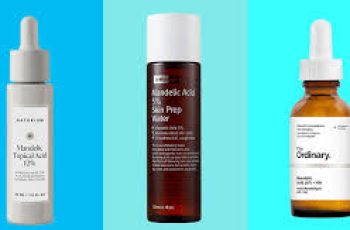
Can Retinol Be Used with Niacinamide and Hyaluronic Acid?
With so many skincare products containing retinol, hyaluronic acid, or niacinamide, it’s hard not to use a product that contains one of these ingredients, whether you notice it or not. The only problem is how confusing these ingredients are and when to apply them to your skin.
Today we’re focusing on how to use retinol, niacinamide, and hyaluronic acid together, and hopefully by the end of today’s blog post, you’ll have a better understanding of how they work together and what results you can expect for your skin.
Can I Mix Hyaluronic Acid with Retinol and Niacinamide?
When mixing skincare ingredients, there’s often a risk of irritation or an allergic reaction. Luckily, niacinamide and hyaluronic acid work well with other ingredients, especially retinol, which is known to cause dryness and flaking in certain areas of the skin. This is completely normal and part of the process of introducing retinol into your daily routine and combining it with hydrating ingredients like niacinamide and hyaluronic acid to reduce dryness.
Retinol: A form of vitamin A, it’s one of the most potent ingredients in skincare. It must be added to your daily routine in the right way to avoid over-drying and skin irritation. It is a multifunctional ingredient with a range of benefits to combat breakouts, signs of aging and uneven skin tone. It does this by speeding up the skin cell renewal process, leaving the complexion looking youthful and resilient, with fine lines, wrinkles and dark spots visibly reduced.
Niacinamide: Also known as B3, it is a highly effective skin regenerating ingredient. It acts as a humectant, allowing water to penetrate the skin and remain on the surface, keeping your face hydrated and moisturized all day long. It combats fine lines and wrinkles by ensuring that the skin’s protective barrier is fully functioning with the right amount of moisture. This ensures that the skin can protect itself from damage caused by pollution, the sun’s UV rays and other environmental influences.
Hyaluronic Acid: Hyaluronic acid occurs naturally in the body and is one of the most hydrating ingredients in skincare. One gram can hold the equivalent of six litres of water. Due to its hydrating properties, the skin’s protective barrier remains fully functional, repairing any damage caused by free radicals and preventing further damage.
If you mix all three together, it’s best to start with retinol, then hyaluronic acid and finally niacinamide in the order of use. Apply retinol first to completely cleansed skin, allowing the ingredients to penetrate into the underlying layers. Using hyaluronic acid afterward can combat dryness and irritation, which are common side effects of using retinol. Hyaluronic acid moisturizes the skin, allowing niacinamide to regulate sebum production and minimize pore formation while keeping the skin hydrated.
Can I use retinol after niacinamide?
As I mentioned, for best results, it’s best to use retinol first and then niacinamide. As a result, these ingredients target signs of aging like fine lines and wrinkles, reduce dark spots and hyperpigmentation, while ensuring that the skin remains healthy and hydrated. There’s an added benefit to using these ingredients: some formulas combine retinol and niacinamide in one product. This is an easier and more convenient way to get the benefits of both ingredients.
How soon after using niacinamide can you use retinol?
This may seem like a simple question, but one thing to remember when using skincare products is that they change based on the pH level in the formula. Often, an imbalanced pH is the cause of skin irritation. So make sure the products you apply to your skin work well together and don’t disrupt the skin’s natural pH. For retinol, this value varies between 5.5 and 6, while niacinamide is most effective between 5.0 and 7.0. This means that both together or with a delay of about 5 to 15 minutes between them can be applied without affecting the skin.
Can niacinamide be used with hyaluronic acid?
Yes, you indeed can. You may even find that your skin loves this hydrating combo! Since the skin is the largest organ, but not the most vital, you will find that any amount of water you consume throughout the day will hydrate all other organs first before helping the skin. This often leads to dehydration, which is often confused with signs of aging, such as fine lines and wrinkles becoming more visible. On the surface of the skin, due to the lack of sufficient water for it to function properly, the barrier is compromised, and further damage occurs. In this case, both hyaluronic acid and niacinamide step in to support hydration and keep the skin in its healthiest state, allowing it to protect itself and act like a moist sponge to fully absorb any skincare formula applied to the skin.
Should I use hyaluronic acid before or after retinol?
Due to the hydrating properties of hyaluronic acid, many people experience the best results when using the ingredient as the last step in their daily regimen. You’ll find that it’s best to apply a serum containing hyaluronic acid to the skin after using retinol, as this helps to counteract the dryness caused by the powerful vitamin A. With hyaluronic acid, any form of moisture is locked into the skin, keeping the barrier strong and healthy and able to avoid long-term damage caused by free radical exposure.
Which came first, niacinamide or hyaluronic acid?
You now know that both ingredients are water-based and have amazing hydrating properties that keep the skin constantly hydrated. If you want to use it in your daily routine, I recommend using hyaluronic acid first, as it replenishes the moisture in the protective barrier and provides hydration. When you follow up with niacinamide, you’ll find that the skin’s sebum production is regulated, helping to keep the balance as well as the microbiome supple and healthy.If you want to learn more about how these moisturizers work together, read our blog post on using hyaluronic acid and niacinamide together.
I hope today we’ve learned a little bit about mixing three of the most popular skincare ingredients and the results you can expect. Don’t forget to visit us on Instagram for new product launches, exclusive giveaways, and discount codes!


